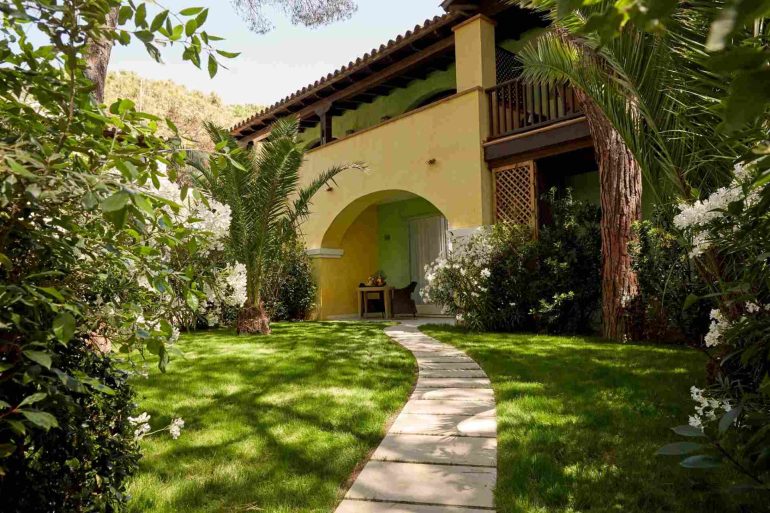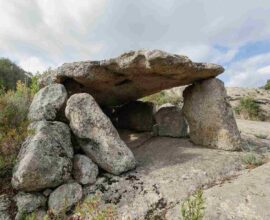What is sustainable architecture? The features of sustainable buildings
Check out the definition, characteristics and benefits of sustainable architecture
Being a cultural approach even before a set of techniques and materials, sustainable architecture (also known as bio-architecture) aims changing the way we conceive and experience internal spaces, making them more efficient and environment-friendly.
There is a lot of talk about sustainability, especially in recent years, so much so that the search for more attentive lifestyles complying with the needs of the environment and all its inhabitants has now become one of the priorities for many businesses and industries.
The housing sector is not an exception. According to official data from the European Commission, it is responsible for over 36% of the EU’s greenhouse gas emissions and uses approximately 40% of the energy consumed in all the member countries. As a matter of fact, by adopting a more holistic perspective, it is clear that the design and construction of new spaces and buildings can’t avoid altering the external environment in which they will be located, in a more or less marked way.
If this is largely inevitable, the good news is that it is possible to act on the way which human action impact on a specific territory and on the environmental stability, especially considering both negative and positive effects in the long term.
Thus, the focus of this issue shifts from the utopia of completely eliminating any environmental impact of the housing and construction industry, which is impossible, to the much more realistic perspective of minimizing it by integrating this human need with the surrounding ecosystems, taking into consideration their long term duration. This is the purpose of sustainable architecture, alias bio-architecture or bio-ecological architecture.
Sustainable architecture: a new way of conceiving the spaces we inhabit
A design approach that aims to create environmentally responsible, energy efficient and socially conscious buildings and urban spaces. And which also takes into account the environmental, economic and social impacts generated over the entire building life cycle, from its design up to its demolition, and comprehends how it fits and coexists with the surrounding context.
To put it into the words used by the Spanish architect Luis de Garrido Talavera, one of the greatest supporters of this approach, sustainable architecture is precisely the one “that satisfies the needs of its occupants, at any time and place, without compromising the well-being and development of future generations”.
Therefore, adopting a sustainable approach to architecture means knowing how to combine functional and formal aspects of a building, keeping in mind since the early stages of the project phase the environmental and social needs of the physical context that it will occupy.
This way, energy and environmental efficiency and the improvement of the quality of life of inhabitants are not distinct factors anymore, but become part of a wider holistic project to pursue by integrating into the building appropriate structures and technologies.
Energy efficiency, well-being and environmental compatibility: features and technologies of sustainable buildings
Data from the European Commission picture a rather dire situation of the housing sector: nowadays over 75% of properties present a certain degree of inefficiency, especially from an energy and environmental pollution point of view.
Hence, energy efficiency and climate neutrality are becoming imperative in the construction of new buildings, as well as in the renovation of existing ones. In recent years, many sustainable and socially responsible architecture projects have been made all over the world, which clearly demonstrate how the synergy of combining comfort and sustainability is possible and also convenient for both the environment and, on the other hand, the clients.
There are several elements that all these projects have in common, and which is possible to identify as the pillars of that building design approach known as sustainable architecture.
Therefore, the distinctive characteristics of sustainable buildings are:
- the attention to the physical orientation of the building, which determines the amount of sunshine and shading produced by considering both external and internal environments, also taking into account the possibility of exploiting natural ventilation or solar rays to guarantee energy self-sufficiency;
- the use of environment-friendly materials and technologies integrating easily with the peculiar characteristics and principles of the so-called “bio-climatic design”;
- the preference for renewable energy sources such as solar panels or wind turbines to reduce dependence on non-renewable energy sources;
- the use of advanced thermal insulation technologies, energy-efficient heating and cooling systems, LED lighting, and low-water consumption devices to reduce the carbon and water footprint of the building, as well as its management costs;
- the choice of low environmental impact materials, for example recyclable and/or recycled construction goods, and of products coming from certified sustainable sources such as wood from FSC sources (Forest Stewardship Council) and insulation materials like cellulose fiber, sheep’s wool, cork or rigid foam;
- the reduction of wastes, made possible by choosing durable high quality raw materials and by reusing them for future construction or renovation works;
- the improvement of indoor air quality through the installation of natural ventilation systems, the choice of non-toxic materials and the reduction of chemical products;
- the commitment to the well-being of the occupants, which translates into the design of more flexible and adaptable spaces that could be easily reorganized and renovated, so reducing the cost (and waste) for total demolition and reconstruction;
- the involvement of the local community in planning and implementing sustainable architecture solutions, promoting awareness and a sense of shared responsibility.
So, sustainable architecture is really a holistic approach, in which the technical and material aspects cannot be separated from a wide and integrated vision of all the factors, that are environmental, social, cultural and psychological, that entails living in a specific place.
In addition, every architectural element must be sustainable not only from a functional point of view, but also and especially from a formal one, in order to convey a broader ecological awareness with its image and the sensations evoked.
These same architectural principles can be integrated into the community life and transposed on a larger scale, making plausible to design urban spaces in which sustainability is applied for the building energy efficiency and the functioning of future city infrastructures.
Sustainable architecture is a key factor of the vision of ForteVillage Resort
In addition to famous buildings around the world, such as the Crystal in London, One Angel Square in Manchester, the Shanghai Tower and the Bahrain World Trade Center, even the luxury resort Forte Village, located between the emerald green of the Mediterranean scrub and the blue turquoise sea of Southern Sardinia awarded as Best Green Hotel in the World at the World Travel Awards, aims to integrate sustainability and attention to the environment within its structures and its offer of wellness, catering and entertainment services. It is no coincidence that the motto We Are Green perfectly synthesize the core of ForteVillage.
The vision of ForteVillage translates, first of all, into respect for the rich natural biodiversity that surround the Resort, which boasts over five thousand plant species for which a skilled team of eighty gardeners work closely with the local authorities on conservation projects to ensure the protection of one of the most biodiverse areas of the Sardinian coast. Other relevant actions refer to the introduction of separate waste sorting systems, the installation of LED bulbs in gardens and bedrooms and solar, thermal and photovoltaic solutions to guarantee the energy and water self-sufficiency of the structure.
At the same time, most of the ingredients used in the ForteVillage kitchens come from local farms and fishing activities or are grown directly in the Resort’s vegetable garden, which guarantees fresh and zero-mile products every day.
There are also many initiatives aimed at spreading the culture of sustainability, such as the Fishing for Litter campaign, created in collaboration with Ogyre, an Italian startup that pursues the ambitious objective of keeping the Sardinian sea clean by actively involving local fishing communities.
Ultimately, the flagship of ForteVillage is the Hotel Business School, a project made in collaboration with the Luiss Business School in Rome addressing to Italian and foreign students who want to become future top professionals in the luxury hospitality sector, emphasizing the diffusion of sustainability culture and the value of local products.
Do you want to stay in a luxury resort that makes sustainability a key principle of its rich offering of services? Book your stay at ForteVillage in Sardinia






